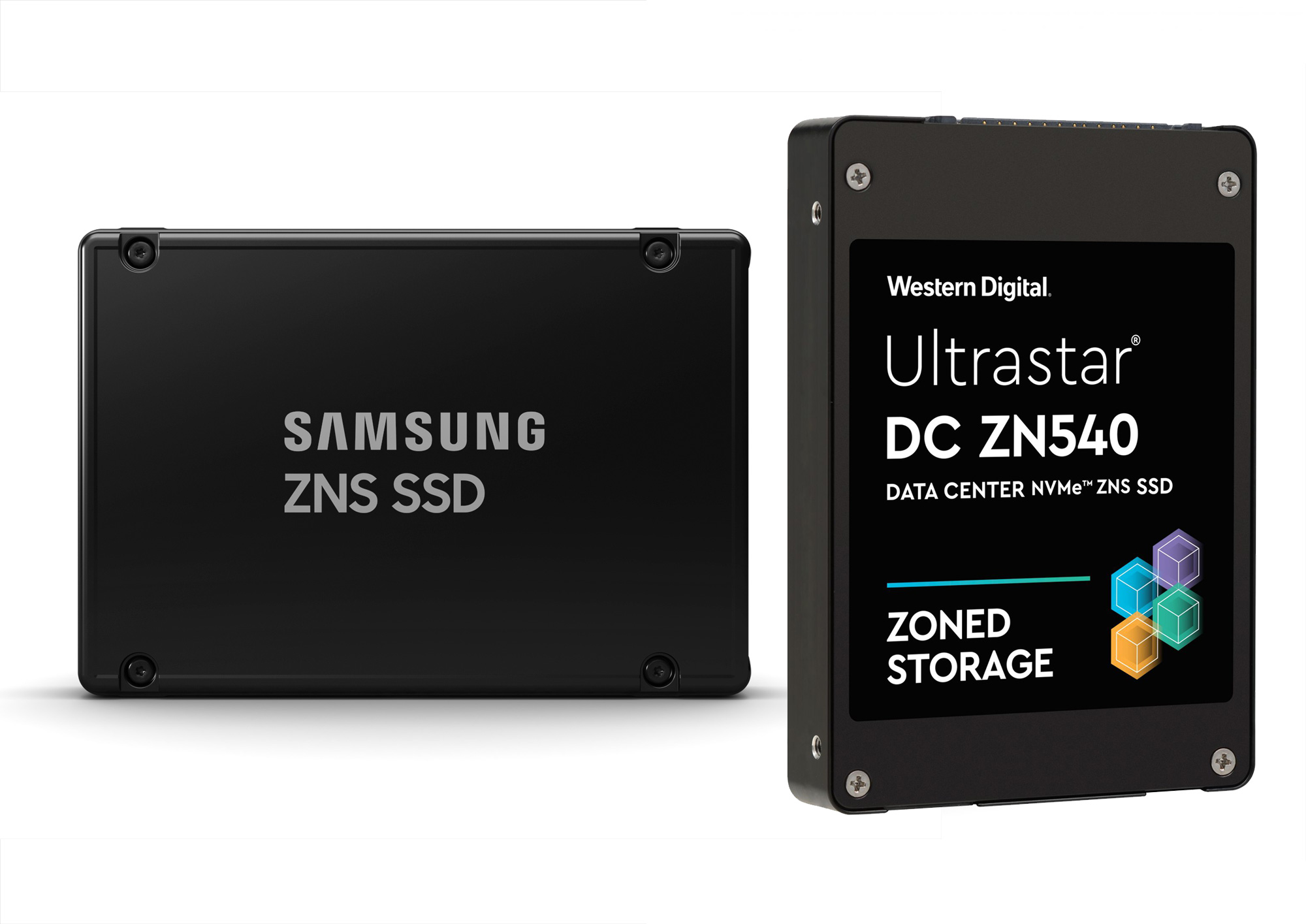
Samsung Electronics and Western Digital have signed a memorandum of understanding (MOU) for a unique collaboration to standardize and drive broad adoption of next-generation data placement, processing and fabrics (D2PF) storage technologies. The information made available reveals that “the companies will initially focus on aligning their efforts and creating a vigorous ecosystem for Zoned Storage solutions. These steps will enable the industry to focus on countless applications that ultimately create greater value for customers.”
Focusing on enterprise and cloud applications, the partnership is expected to spur a range of collaborations around technology standardization and software development for D2PF technologies like Zoned Storage. With this collaboration, end-users can have confidence that these emerging storage technologies will have support from multiple device vendors as well as from vertically integrated hardware and software companies.
Zone Storage is a new paradigm in storage motivated by the incredible explosion of data. As society becomes increasingly dependent on data, it becomes essential for companies to carefully manage the tens of thousands of HDDs and SSDs in a cost-effective way. Western Digital introduced its the Zoned Storage Initiative in 2019, an initiative focused on data infrastructure, and more specifically on open data infrastructure designed to take advantage of Zoned Storage Devices (ZSDs).
According to a report by IDC (Worldwide Global DataSphere Forecast, 2020–2024: The COVID-19 Data Bump and the Future of Data Growth) by 2024, enterprises, machines, industries, consumers, science, and more will be creating, capturing, copying, and consuming 143 zettabytes per year, making the way data is stored and distributed even more crucial.
The IDC study, which presents a five-year forecast for the worldwide Global DataSphere market reveals, according to Dave Reinsel, senior vice president, IDC’s Global DataSphere, that “instead of hindering growth, the COVID-19 pandemic accelerated it, creating a surge in video-based content consumption and disrupting the Global DataSphere growth trend, especially in 2020 and 2021.”
Aware of the growing needs of the industry, and to make the whole concept of Zone Storage more universal, Western Digital and Samsung now announce they will cooperate towards standardization of Zoned Storage technology. This marks the first time that both Samsung and Western Digital have come together as technology leaders to create widespread alignment and stimulate awareness for important storage technologies.
“Storage is the essential foundation for how people and businesses consume and use data. To enable today’s needs and tomorrow’s next big ideas, we must innovate, collaborate and keep pace as an industry in bringing new standards and architectures to life,” said Rob Soderbery, EVP and GM, Flash Business Unit at Western Digital. “In order for a technology ecosystem to be successful, overall frameworks and general solution models must come together so they do not suffer from fragmentation, which delays adoption and adds unnecessary complexity for software stack developers.”
Soderbery added, “For years Western Digital has been laying the foundation for the Zoned Storage ecosystem by contributing to the Linux kernel and open-source software community. We are excited to bring these contributions to this joint initiative with Samsung in facilitating wider adoption of Zoned Storage for users and application developers.”
The two companies have already kickstarted an initiative around Zoned Storage devices, including ZNS (Zoned Namespaces) SSDs and SMR (Shingled Magnetic Recording) HDDs. Through organizations such as SNIA (Storage Networking Industry Association) and the Linux Foundation, Samsung and Western Digital will define high-level models and frameworks for next-generation Zoned Storage technologies. With a commitment to enable open and scalable data center architectures, they have founded the Zoned Storage TWG (Technical Work Group), which was approved by SNIA in December 2021. The group is already defining and specifying common use cases for Zoned Storage devices, as well as host/device architecture and programming models.
In addition, this collaboration is expected to serve as a starting point to expand zone-based (e.g. ZNS, SMR) device interfaces, as well as future-generation, high-capacity storage devices with enhanced data placement and processing technologies. At a later stage, these initiatives will be expanded to include other emerging D2PF technologies such as computational storage and storage fabrics including NVMe over Fabrics (NVMe-oF).
